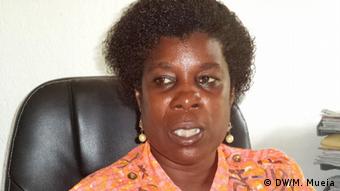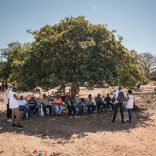As MSF activities come to an end in Nampula: Five facts about our work on neglected diseases in ...
Mozambique: Collective fainting at Quelimane school causes concern

Sangarriveira Secondary School in Quelimane, Zambézia
The phenomenon, most recently noted at the Sangarriveira Secondary School in central Mozambique, mainly affects girls. Authorities, community leaders, and academics differ on its cause.
Frequent fainting at the Sangarriveira Secondary School in Quelimane, Zambezia Province, central Mozambique, is a source of concern for students, community leaders and academic alike.
The most frequent victims are young females. One of them, called Ana Jorge, told DW Africa that she did not have any explanation.
“I don’t know how to explain what is happening at school. I just feel a shiver in my body and then I fall over. There are frequent faintings in my class: five girls have passed out this week alone. We are scared, but we have nowhere else to go,” she says.
The Sangarriveira General Secondary School is one of the most crowded schools in Quelimane. The small classrooms hold more than 100 students.
“I do not know exactly how this happens, but I actually feel a shiver in my body suddenly,” adds another victim, Joana Estevao, criticising the school management for not addressing the problem.
A school guard, who preferred to remain anonymous, called on local government and neighbourhood structures to analyse the situation and prevent students from dropping out of school out of fear.
Student Lazito Julius is terrified. “I have helped at least three of my classmates. One of them fell over during class and we were scared. We thought it was some illness, but after a few hours she was resuscitated. If we leave this school, we will not have anywhere to study, because there is a shortage of places in schools,” he says.
Reason for fainting

Some people say the reason for the fainting is the fact that the school was built on what was once a graveyard, and traditional rituals were not followed. Júlio Joenta, the traditional chief [régulo] of the community, says the fainting is caused by the provincial Department of Education not having honoured traditional principles.
“I personally was there at the laying of the first stone for the construction of the school, and there for during 2011 and 2012. But, when construction was finished, there were no opening ceremonies and we were not called. We do not know if they are spirits, but ignoring traditions may be the reason for the problem,” Joenta says.
Régulo Joeanta denies, however, that the fainting is happening because the school was built on a graveyard. “There where the school lies there was not a cemetery. That space belonged to several families – I do not know if they were compensated or not,” he recounts.
The academic and social activist Ricardo Raboco says the fainting is a form of social pressure for a ceremony of evocation to the spirits of the ancestors.
“It is necessary to recognise the role or authority of the traditional within a community,” he explains. “People forget, but when they are haunted by a situation, they remember their existence, and behind it is a form of social control that this traditional authority tends to have on society to claim its social role, which has, from the historical point of view, been marginalised.”
School management denies fainting
The director of Sangarriveira High School, Paulina Alamo, denies that there are frequent fainting in classrooms. According to the teacher, there was never fainting in her institution, and students and security agents who claim to have assisted students were lying.

An official at the Zambezia Provincial Directorate for Education and Human Development said that the school was not officially inaugurated because it was built without meeting the necessary criteria and consequently did not have the required quality.
The president of the Zambézia Traditional Doctors Association, Ernesto Selemane, advised the school management to hold a traditional ancestor worship service there to put an end to the problem.
Similar cases of collective fainting have already been reported in other countries around the world. In 2014, more than 200 girls suffered from mysterious fainting at a school in El Carmen de Bolívar in northern Colombia.
Clinical analysis of the students found no specific disease.
One of the explanations given by the country’s health authorities was a phenomenon called ‘mass psychogenic response’, a kind of contagious collective fear. A similar phenomenon occurred in Taiwan after a mass vaccination campaign to prevent swine flu (N1H1).













Leave a Reply
Be the First to Comment!
You must be logged in to post a comment.
You must be logged in to post a comment.